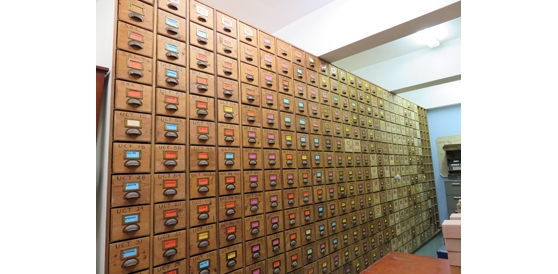This collection that was started in 1911 by RB Thompson and is known as the UCT Human Skeletal Repository, these were first accessioned by MR. Drennan in 1925, see image. The Division of Clinical Anatomy and Biological Anthropology in the Department of Human Biology is responsible for the curation (long-term management and preservation) of these human remains and their associated materials and documents (See Gibbon and Morris 2021). The Repository houses three categories of human skeletal remains, archaeological, forensic cases and cadaveric derived. It is currently managed and curated by Associate Professor Geney Gunston in accordance with the National Health Act (2013), the Human Tissues Act (1983) and the South African Heritage Resources Agency (SAHRA) under the graves and burial grounds section 3g of the National Heritage Resources Act of 1999.
The cadaveric skeletons have been sourced from bodies that have been donated (by a family member, the state as paupers, or the individual themselves) to the Department for use in education and health sciences research. These individuals are first used in anatomical dissections and then skeletonised for teaching and research purposes. For these we know age-at-death, sex and ancestry, including cause-of-death, which makes them very valuable for research purposes. There are 389 cadaveric skeletons in this repository.

Both the Forensic and Archaeological skeletons have UCT identification numbers there are 640 skeletons from these contexts within the repository.
Skeletons of a forensic context are unidentified skeletal remains recovered by the South African Police Service and the Forensic Pathology Services are brought to us for a biological profile and are often (but not always) stored at UCT until either an identity can be established or the inspectorate of Anatomy provides permission for these remains to be used for teaching and research purposes.
In the event of the recovery of human skeletal remains during controlled archaeological excavations, subsequent procedures laid out in Section 35 of the National Heritage Act. SAHRA may request the Division of Clinical Anatomy and Biological Anthropology to excavate or hold human remains uncovered in the course of construction, erosion, an investigation or any other activity. These include any human skeleton derived from historic or archaeological contexts generally dating to older than 65 years, younger if found in a formal burial.
The University of Cape Town is aware of the diverse views around the retention of human remains within the institution. We are actively engaged in conversations with government and communities regarding improving policy and legislation around human remains stewardship and where relevant we are engaged in community participatory restitution. All decisions to access these individuals and any associated contextual information are done so in accordance with relevant regulatory agencies and made by a Committee.
For any question regarding research access to this Repository please contact:
To apply to the repository the attached application Form must be completed accompanied by a 2 page research proposal and CV of the applicant. The application will be assessed by a committee, application turn around time is aimed to be less than 6 weeks. Application that involve destructive sampling or imaging will require Human Ethics approval and may require permission from the appropriate Heritage agency before the sampling can take place.
Once permission is granted applicants should notify and send a reminder 2 weeks in advance of pending arrival, also detailed arrangements of access must be organised 2 days in advance with Ms. Caroline Powrie or A/Prof. G Gunston. Hours of operation are Monday-Friday 8:00-16:00.